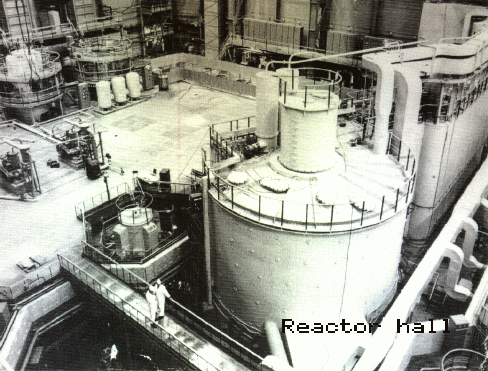My recent posts have been about breeder reactors which generate more fissile material than they consume. There is renewed global interest in breeder reactors for the production of nuclear fuel and the destruction of nuclear waste. Today’s post is the second in a series about the history and current status of breeder reactors in India.
The Indian Department of Atomic Energy (DAE) started planning for a larger Prototype Fast Breeder Reactor (PFBR) even before the Fast Breeder Test Reactor was started. The DAE first requested money for the PRBR in 1983 and began expenditures in 1987. It was projected that the new reactor would go online by the year 2000. After missing the year 2000 startup, construction began in late 2004 and the PFBR now was projected to go online in 2010. In reality as of mid-2013, the PFBR was projected to go online in 2014. During the life of this project the cost has rising by over fifty percent.
During its development and construction, the safety of the PFBT has been called into question. There is a danger of terrible accidents with explosive energy releases and dispersion on radioactive materials over a large area. The core as designed is not as reactive as it could be. If an accident damaged the fuel rods, the level of the reaction could increase in a positive feedback loop and cause a catastrophe. There is a another potential problem involving the sodium coolant. If the coolant rises above the standard operating level, it will become less dense and the reactivity would increase causing similar problems to those listed above for the fuel rod damage.
In addition to problems with the fuel rod and sodium coolant reactivity issues, the PFBR also has weak containment. As designed, the containment could only withstand pressures twenty five percent over normal atmospheric pressure. Using a combination of size and containment for comparison, the PFBR containment is weaker than almost all the other demonstration breeder reactors in the world. Containment vessels for light water reactors may be up to ten times better than the PFBR containment. The Indian design team excuses this weak containment on the basis of very optimistic projections about possible accidents that the PFBR may encounter. Less optimistic projections suggest that the containment of the PFBR is far from adequate.
Indian’s justification for the creation of breeder reactors is that India has very little uranium. Actually, India has a variety of sources of uranium which could be exploited for different costs. India relies on pressurized heavy water reactors for nuclear power. The Indians have made very optimistic projections about the ability of breeder reactors to produce electricity at roughly the same cost as the pressurized heavy water reactors currently in use. Other countries have found that breeder reactors are much more expensive and difficult to construct and operate safely than the non-breeder reactors that are currently used for power production. The DAE has consistently underestimated the construction costs for all of the existing Indian reactors.
Cost analysis of uranium and plutonium for use in breeder versus non-breeder reactors reveals that India has plenty of uranium for its convention reactors to last for decades which invalidate that claim that India needs breeder reactors for fuel production. Breeder reactors can also produce weapons grade plutonium. Some observers suspect that what India is really after is a steady source of high grade plutonium for its nuclear weapons program. India has resisted international efforts to constrain the Indian breeder reactors under development to purely civil energy production.
India has outlined a very aggressive breeder reactor program projecting twenty gigawatts capacity by 2020 and two hundred and seventy five gigawatt capacity by 2052. Declining international restrictions on exporting nuclear fuel to India have given rise to even higher estimates of future breeder reactor capacity in India. Once again, it appears that the DAE is being over-optimistic with estimates of plutonium production that are not realistic even without the inevitable accidents, delays, and under-estimated costs. Given the experience of other countries which have had aggressive breeder reactor programs, it is unlikely that the envisioned bright future for breeder reactors will ever materialize in India.
Prototype Fast Breeder Reactor:






